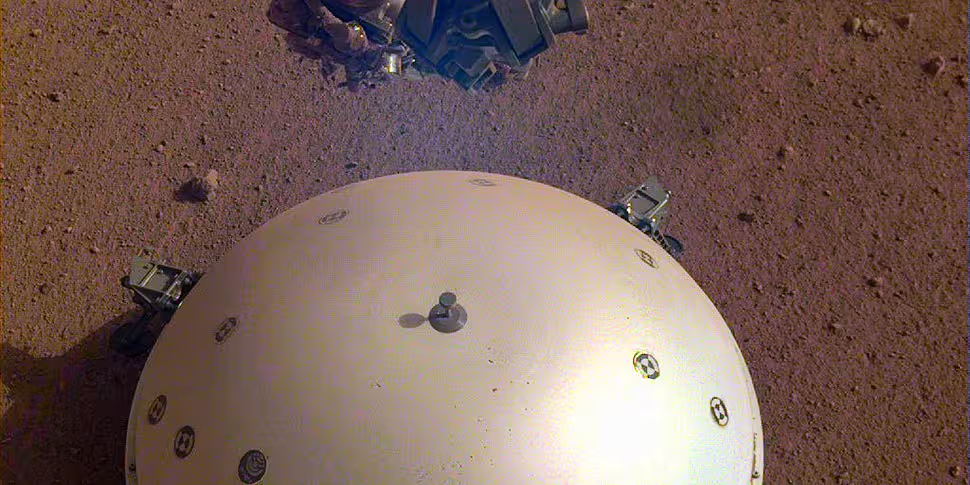NASA has recorded the first ever Marsquake on the red planet.
The faint seismic signal was recorded by the Insight lander on April 6th - the lander's 128th Martian day.
This is the first recorded trembling that appears to have come from inside the planet, as opposed to being caused by forces above the surface, such as wind.
Scientists are still examining the data to determine the exact cause of the signal.
It was detected by the lander's Seismic Experiment for Interior Structure (SEIS) instrument.
InSight principal investigator Bruce Banerdt said: "InSight's first readings carry on the science that began with NASA's Apollo missions.
"We've been collecting background noise up until now, but this first event officially kicks off a new field: Martian seismology".
The new seismic event was too small to provide solid data on the Martian interior, which is one of InSight's main objectives.
The surface is extremely quiet, allowing equipment to pick up faint rumbles.
In contrast, Earth's surface is quivering constantly from seismic noise created by oceans and weather.
NASA made the comparison that an event of this size in Southern California would be lost among dozens of tiny crackles that occur every day.
"The Martian Sol 128 event is exciting because its size and longer duration fit the profile of moonquakes detected on the lunar surface during the Apollo missions," said Lori Glaze, planetary science division director at NASA headquarters.
NASA's Apollo astronauts installed five seismometers that measured thousands of quakes while operating on the Moon between 1969 and 1977.
Different materials can change the speed of seismic waves or reflect them - allowing scientists to use these waves to learn about the interior of the Moon and model its formation.
NASA is planning to return astronauts to the Moon by 2024, laying the foundation that will eventually enable human exploration of Mars.
InSight's seismometer, which the lander placed on the planet's surface on December 19th 2018, will enable scientists to gather similar data about Mars.
By studying the deep interior of Mars they hope to learn how other rocky worlds, including Earth and the Moon, formed.









